Lone Star Review: Unraveling Sayles' American Tapestry
Our Lone Star review unravels John Sayles' masterful 1996 neo-Western. Set in a Texas border town, this murder mystery delves into complex themes of identity, history, and race. Lone Star offers a nuanced portrayal of American life that remains relevant decades later.
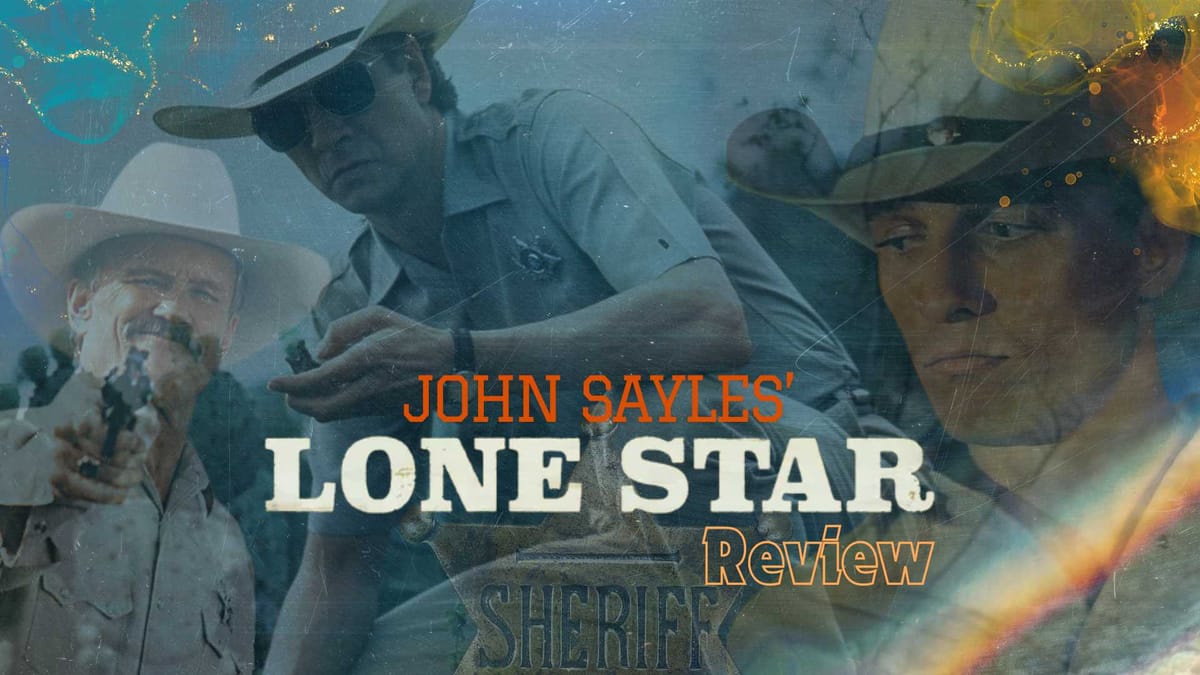
Here at Rewind Zone, we believe that every film is a tapestry of meanings, intentions, and cultural reflections. Our mission is to peel back these layers, offering insights and explanations that may not be immediately apparent to the viewer. We dive deep into the heart of cinema, exploring the nuances that make each film a unique piece of art and social commentary.
Today, we turn our analytical lens to the 1996 film Lone Star, directed by John Sayles in what many consider to be the pinnacle of his career. This neo-Western mystery, often lauded for its complex narrative structure and exploration of racial dynamics, raises several intriguing questions: How does Sayles use the murder mystery genre to delve into deeper themes of identity and history? Does the film's intricate storytelling enhance or obscure its message? And perhaps most importantly, why does Lone Star continue to resonate with audiences nearly three decades after its release?
In the landscape of 1990s independent cinema, few films stand as tall as Lone Star. Released in a decade marked by the rise of auteur-driven narratives and boundary-pushing storytelling, Sayles' work distinguishes itself through its nuanced exploration of American identity. As we unravel the layers of this cinematic tapestry, we'll discover how Sayles weaves together themes of personal history, racial tension, and the myth of the American West to create a work that is both intimately personal and broadly relevant to our national discourse.
Join us as we explore the dusty streets of Frontera, Texas, where the past and present collide in a story that is as much about solving a murder as it is about understanding the complex legacy that shapes our collective identity. Through our analysis, we aim to showcase why Lone Star is not just a great film of its time, but a timeless piece of American cinema that continues to offer new insights with each viewing.
Film Overview
- Director: John Sayles
- Release Year: 1996
- Setting: Fictional border town of Frontera, Texas
- Main Cast:
- Chris Cooper as Sam Deeds
- Elizabeth Peña as Pilar Cruz
- Kris Kristofferson as Charlie Wade
- Matthew McConaughey as Buddy Deeds
Box Office Trivia
- Opening Weekend: $232,184 (1.8% of total gross)
- Legs: 16.09 (domestic box office/biggest weekend)
- Domestic Share: 99.9% (domestic box office/worldwide)
- Production Budget: $5,000,000 (worldwide box office is 2.6 times production budget)
- Theater counts: 21 opening theaters/214 max. theaters, 13.7 weeks average run per theater
- Inflation Adjusted Domestic Box Office: $31,608,739
Plot Summary
The story begins when a skeleton is discovered in the desert near Frontera, Texas. Sheriff Sam Deeds (Chris Cooper) investigates, uncovering a web of secrets that span generations. As he digs deeper, Sam must confront the legacy of his father, legendary Sheriff Buddy Deeds, and the town's complex racial dynamics. The narrative skillfully weaves between past and present, gradually revealing the interconnected histories of Frontera's white, Hispanic, and Black communities.
Themes and Analysis
Borders and Boundaries
Lone Star is fundamentally a film about borders—both literal and metaphorical. Set in a Texas border town, it explores the physical boundary between the United States and Mexico, as well as the less tangible divisions between racial and cultural groups. Sayles masterfully deconstructs these borders throughout the film, showing how they are often artificial and permeable.
Historical Revisionism and Mythmaking
The film delves deep into the concept of historical revisionism, questioning who gets to write history and why. This is evident in the classroom scene where parents and teachers argue over the appropriate version of Texas history to teach, as well as in the competing narratives surrounding Buddy Deeds' legacy. Sayles challenges viewers to consider how myths are created and perpetuated, often at the expense of more complex truths.
Intergenerational Relationships
Lone Star explores the complex dynamics between parents and children across multiple families. Sam's investigation forces him to reevaluate his relationship with his deceased father, while other characters grapple with their own familial legacies. These intergenerational conflicts serve as a microcosm for broader societal changes and tensions.
Race and Identity
The film presents a nuanced portrayal of racial dynamics in a multicultural community. It shows how identities are fluid and often more complex than they appear on the surface. Characters like Mercedes Cruz, who distances herself from her Mexican heritage, highlight the complicated nature of racial and cultural identity in border regions.
John Sayles' Filmography
Lone Star is often considered one of John Sayles' best works. To explore more of his impressive filmography, check out our article on John Sayles' Top 10 Movies.
For fans of Sayles' earlier work, we also have an in-depth look at the cast of his 1987 film Matewan in our article Cast of Matewan (1987): Then and Now.
Cinematic Techniques
Seamless Transitions
One of the most striking aspects of Lone Star is Sayles' use of seamless transitions between past and present. Instead of using traditional cuts, the camera pans or tracks to move between time periods within a single shot. This technique visually reinforces the film's themes of historical continuity and the ever-present nature of the past.
Visual Storytelling
The film's cinematography, by Stuart Dryburgh (The Piano and The Painted Veil), captures the stark beauty of the Texas landscape while also emphasising the intimacy of the characters' interactions. The visual style shifts subtly between the past and present scenes, helping to orient viewers in the complex narrative.
Gallery
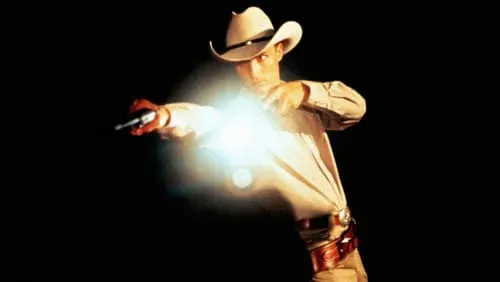
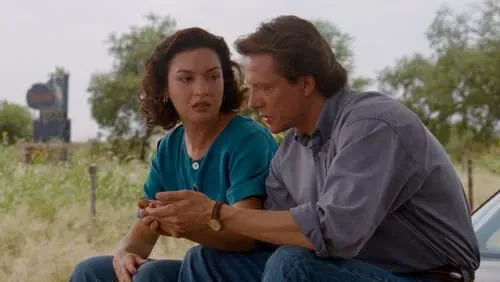
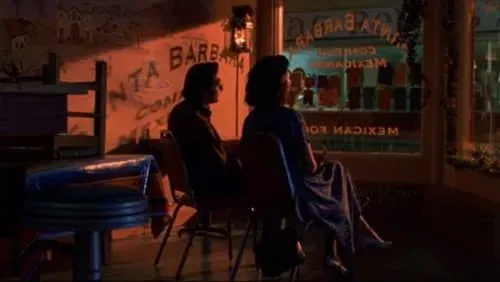

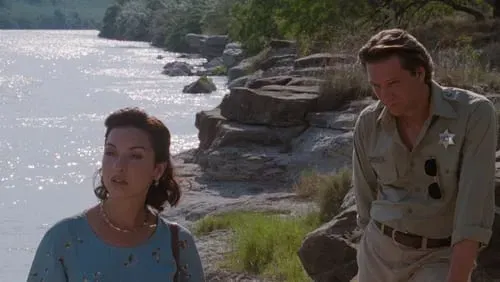
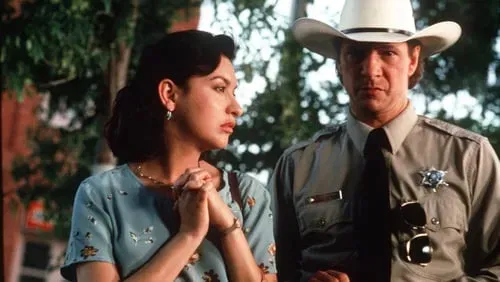

Lone Star (1996) Gallery: Courtesy TMDB
Critical Reception and Legacy
Upon its initial release in 1996, Lone Star received widespread critical acclaim. It was praised for its intelligent screenplay, nuanced performances, and ambitious scope. The film earned Sayles an Academy Award nomination for Best Original Screenplay.
In the years since its release, Lone Star has only grown in stature. It is widely regarded as Sayles' masterpiece and a landmark of 1990s independent cinema. The 2024 4K restoration and re-release have brought renewed attention to the film, with many critics noting its continued relevance to contemporary discussions of race, immigration, and American identity.
Key Questions Answered
Now that we have analysed Lone Star and what made it tick, let's explore three crucial aspects that make this film a standout piece of American cinema and the reasons behind its enduring resonance with audiences.
Murder Mystery as a Lens
Sayles uses the murder mystery genre to delve into deeper themes of identity and history, creating a narrative that goes beyond a simple whodunit.
Key elements:
- Explores personal and communal identity
- Uncovers interconnected histories
- Deconstructs myths of the American West
- Provides a compelling narrative hook
Intricate Storytelling
The film's complex narrative structure enhances its message, creating a rich tapestry that invites active engagement from the audience.
How it enhances:
- Seamless past-present transitions
- Multiple perspectives on events
- Mirrors the investigative process
- Encourages deeper reflection
Enduring Resonance
Nearly three decades after its release, Lone Star continues to resonate with audiences due to its timeless themes and nuanced portrayal of American life.
Reasons for relevance:
- Exploration of identity and community
- Nuanced portrayal of race relations
- Questions of historical narrative
- Universal human drama
- Exceptional cinematic craftsmanship
What Do We Think Then?
Our Verdict

Rewind Zone Final Score
Final Thoughts
After multiple viewings, I'm convinced that Lone Star stands as one of the most richly layered films in American cinema (possibly one of the most underrated films from the 1990s). It's not just a movie; it's an experience that continues to reveal new depths with each watch. Sayles has crafted something truly special here—a work that manages to be both an engrossing mystery and a profound commentary on the American experience.
What strikes me most is how Sayles weaves together the personal and the historical. He doesn't just tell a story; he creates a world that feels intimately real, populated by characters whose struggles and revelations resonate deeply. The performances across the board are outstanding, but it's Chris Cooper's nuanced portrayal of Sam Deeds that anchors the film, providing a human focal point for the sweeping themes Sayles explores.
I'm particularly impressed by how relevant Lone Star remains today. As I watch the news and see ongoing debates about race, immigration, and how we teach history, I'm constantly reminded of scenes from this film. Sayles was prescient in his exploration of these issues, and I believe his treatment of them is more nuanced and thoughtful than much of what we see in contemporary discourse.
I can't recommend Lone Star highly enough. If you appreciate cinema that challenges you, demands your full attention, and rewards it tenfold, this is a film you need to see. It's not just a great movie; it's a vital piece of American storytelling that I believe will continue to resonate for generations to come.
If you have enjoyed this deep dive, please head over and dive even deeper:









Comments ()